The hand and wrist is made up of 8 carpals, 5 metacarpals and 14 phalanges – 3 in each of the four fingers and 2 in the thumb. The elbow, wrist and hand are susceptible to fractures, ligament sprains and muscular strains.

The most common muscle involved in tennis elbow is the extensor carpi radialis brevis (ECRB). The muscles originate from a common extensor tendon origin, and therefore a tear or degeneration in this area can cause pain on movements involving the extensor muscles, such as wrist extension.
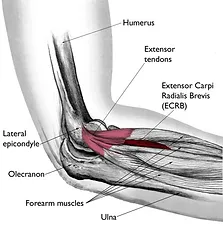
The symptoms of golfer’s elbow originate from the medial epicondyle as this is the common flexor tendon origin. Medial epicondylalgia is less common than lateral epicondylalgia, and generally pronator teres, flexor carpi radialis and palmaris longus are most often involved.
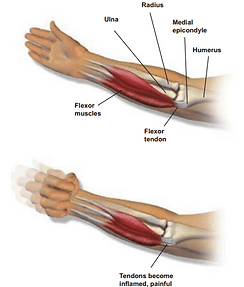
The carpal tunnel is a canal formed by bone and ligaments which border the wrist. The nine flexor tendons and the median nerve pass through this canal.
With increasing demands on the flexor tendons (overuse/repetitive movements of the wrist) the tunnel may become compressed, putting pressure on the median nerve, which can cause numbness and tingling in the hand.
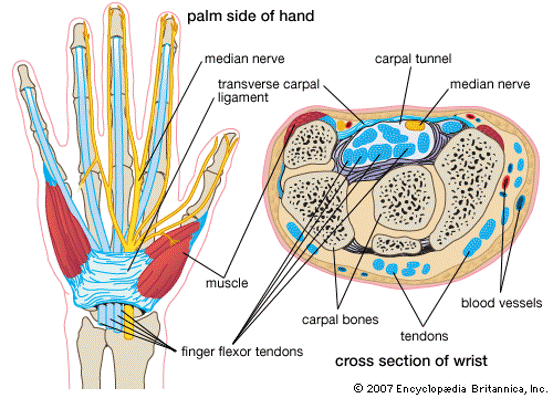
Most ganglions form a visible lump, however, smaller ganglions can remain hidden under the skin. If a cyst puts pressure on the nerves that pass through the joint, it can cause pain, tingling, and muscle weakness. Some cysts may be there for many years without causing symptoms.
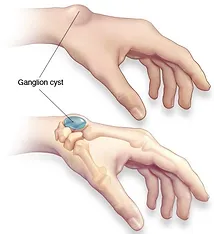

DeQuervain’s is tenosynovitis of the first dorsal compartment, which is occupied by the extensor pollicis brevis and abductor pollicis longus. The tendons are held within an osseofibrous canal lined by synovium, and if it comes under repetitive or excessive stress, this may result in pain, swelling and decreased thumb motion. Work related activities, which involve gripping, pinching and direct injury are common causes of De Quervain’s. It is more common in woman than men, particularly women with small children due to the repetitive lifting of their children and other household tasks.
Also known as baseball finger. Commonly occurs when a force is applied to the end of the finger resulting in the extensor indicis tendon rupturing (such as when incorrectly catching a ball).
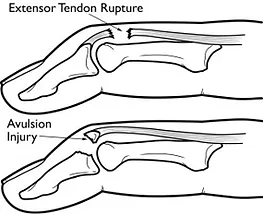
Fingers are susceptible to sprains, strains and dislocations.
A sprain in the finger occurs when the ligaments that connect and support the bones and joints of the finger are damaged.
A dislocated finger is a result of the bones in the finger being moved from their normal position. A dislocation can occur at any of the joints in any finger.